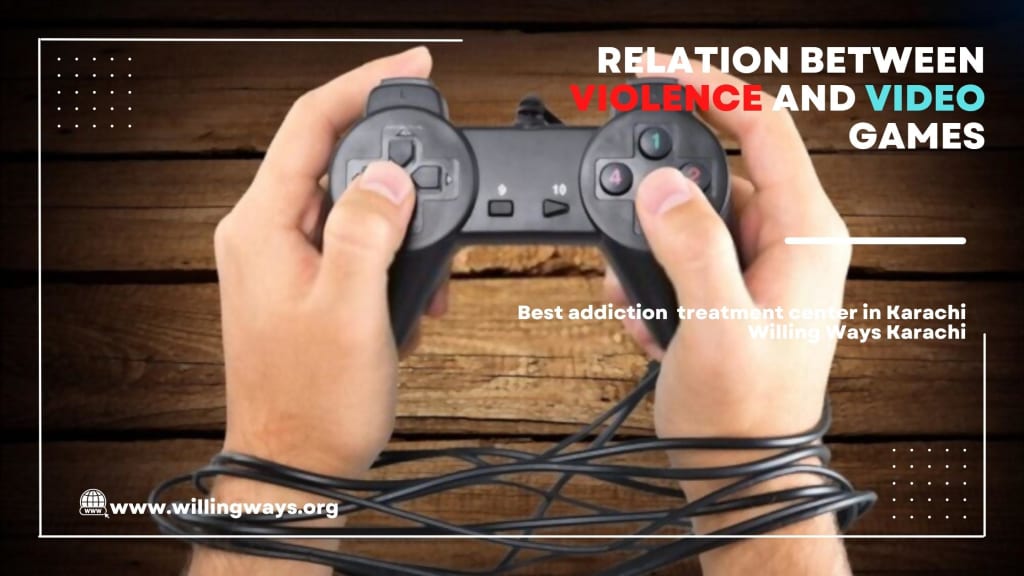Relation between Violence and Video Games
The knowledgeable information are discussing below about the relation of violence and video games

Violence and addiction to a video game are related to each other at the best addiction treatment center in Karachi; willing ways Karachi, the experts, said these sayings to the people about the addiction Treatment Options for Video Game Addicts are also available here as it is increasing now a days.
Today on Amazon.com, one of the most famous computer games being sold is named "Important mission at hand 4: Current Fighting." In this game, players can assume the job of either the U.S. or, on the other hand, an English trooper who is shipped off military "problem areas" to overcome the world's most risky adversaries. Like different games in their type, the pictures are close to exact, and the brutality is realistic.
As the degree of savagery in computer games has expanded, so worries about the consequences for those who play - particularly those who play a ton. Many rushes to call attention to the fact that energetic gamers have completed most acts of mass violence as of late, and their rounds of the decision were consistently dull and fierce.
In any case, it makes one wonder: Which starts things out? Could violent and vicious behaviour at any point be ascribed to savagery in video games? Or, on the other hand, do the people who play as of now have brutal propensities which attract them to savage games? It's a sort of "chicken or the egg" banter that has solid promoters on the two sides.
However, computer games showed up during the 1970s; it was only after frameworks like the Sony PlayStation were delivered during the 1980s that savagery became an issue. Alongside these more refined frameworks came the capacity to make illustrations more similar. The more similar they've turned into, the more interest there has been in the connection between violent games and brutal ways of behaving.
One of the essential worries with viciousness in computer games is that gaming isn't detached. To play and win, the player must be the attacker. As opposed to watching savagery, as he could on TV, he's committing vicious demonstrations. Most scientists recognize that this dynamic cooperation temporarily influences an individual's idea designs.
Another concern of the two scientists and guardians is that brutality in computer games is frequently compensated instead of rebuffed. In armed forces and marksman games, players "step up" based on the number of individuals they kill. Games like this can slant a youngster's impression of viciousness and its ramifications if played enough of the time.
In 2002, specialists Anderson and Bushman fostered the Overall Hostility Model (GAM). Frequently viewed as one of the best commitments to investigating brutality and computer games, the GAM makes sense of the mind-boggling connection between violent computer games and forceful gamers. The GAM takes some (but not all) of the intensity of computer games by recognizing that a gamer's character plays into how he is impacted by viciousness. Anderson and Bushman allude to three inner features - contemplations, sentiments, and physiological reactions - that decide how an individual deciphers a forceful way of behaving. Specific individuals' responses usually are more unfriendly, making them inclined to answer all the more forcefully to savage computer games.
Momentary impacts were effectively distinguished in the GAM, the most noticeable being that savage games alter how gamers decipher and answer forceful demonstrations. Indeed, even the individuals who aren't inclined toward hostility answer with expanded antagonism after playing a brutal computer game. The game turns into what's known as a "situational variable," which changes the impression of and response to a forceful way of behaving.
Long haul impacts of savage computer games are as yet unsure and are furiously discussed. No drawn-out examinations have been directed to date, so there are just speculations. Anderson and Bushman hypothesized that unnecessary openness to rough computer games causes the development of firm convictions and mentalities while likewise desensitizing gamers to brutal ways of behaving.
However, long-haul impacts haven't been clinically reported; one needs to look at how computer game savagery has logically expanded throughout a long time to get a feeling of possible long-haul impacts. Guardians should, in all seriousness, screen how much time their children spend gaming and watch intently for any adverse consequences.
About the Creator
Willing Ways
Willing Ways is the Best addiction treatment center in Pakistan. We are the pioneer in drugs & alcohol treatment centers with outstanding services and a history of 43 years. We deliver quality writing that is beneficial for you.
Enjoyed the story? Support the Creator.
Subscribe for free to receive all their stories in your feed. You could also pledge your support or give them a one-off tip, letting them know you appreciate their work.






Comments
There are no comments for this story
Be the first to respond and start the conversation.